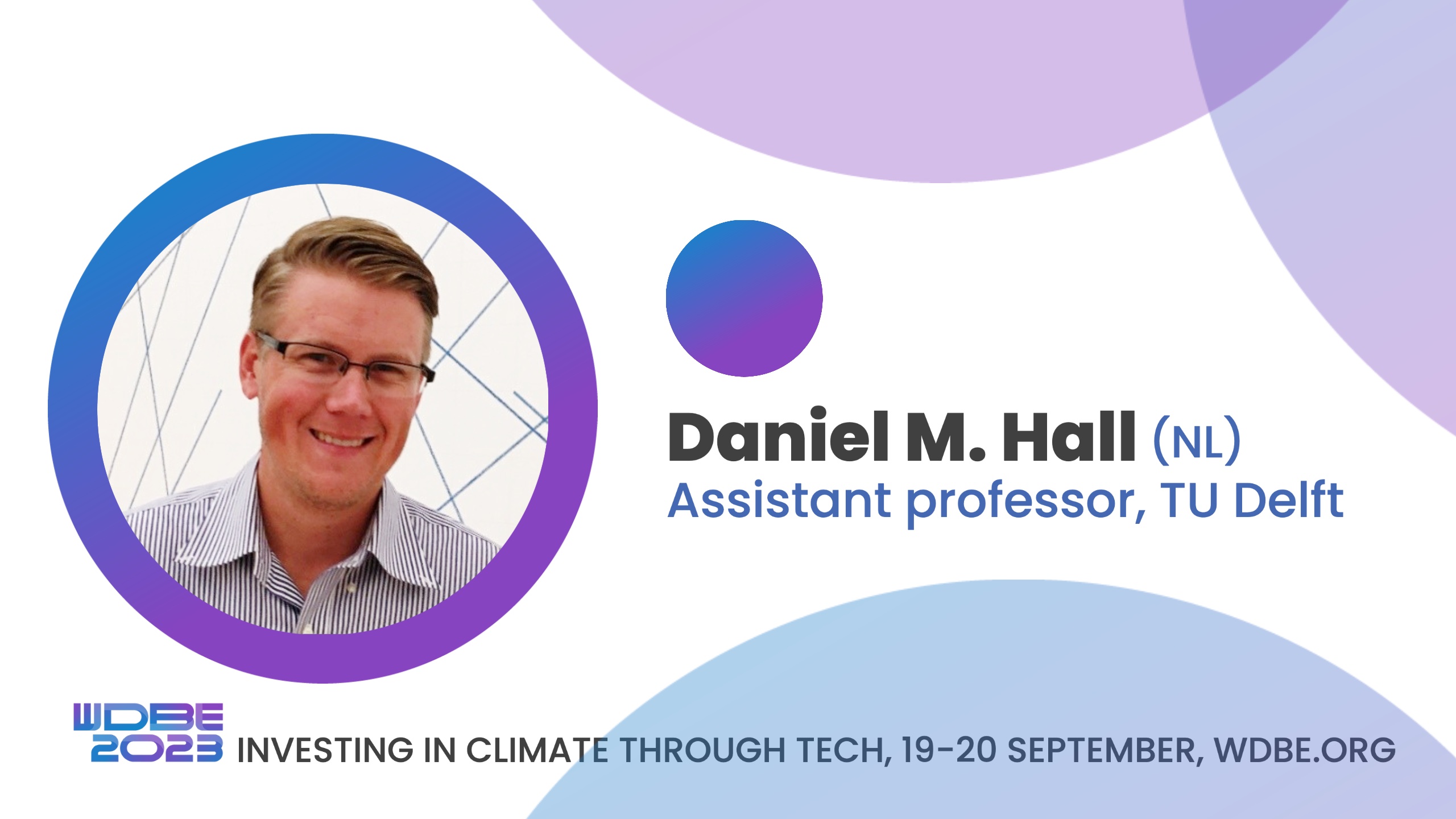We sat down with Daniel M. Hall, an assistant professor at TU Delft, to discuss ways of achieving circularity in the built environment. Daniel will be a keynote speaker at WDBE in September 2023, where he’ll talk more about future circular cities.
Daniel is internationally known for his research on construction management and construction informatics. He did his Ph.D. at Stanford and worked for almost five years as an Assistant Professor of Innovative and Industrial Construction at ETH Zurich. In September 2022, he moved to the Netherlands.
The Delft University of Technology, Daniel’s new home base, strongly emphasizes the circular economy and circularity and has a long history of excellent teaching and research. It provides an inspiring environment for innovating the future.
Why we need to improve circularity in cities
“We cannot keep building the way we’ve been building. We don’t have enough resources; we don’t have enough materials,” Daniel asserts. “Obviously, we have questions around carbon impact. Around 40 percent of all CO2 emissions come from a combination of building operations and building materials.”
At the same time, as we struggle with environmental issues and urbanization, there is a continuing need for new buildings. For example, the Netherlands has just announced a program to build one million homes in what is already the densest country in Europe.
Consequently, there’s a huge need for resource efficiency. Too many valuable resources turn into waste and end up in landfills. Therefore, circularity is becoming necessary to ensure that we can satisfy the demand for new buildings and infrastructure.
Data is key to circularity
Built assets and components have variable lifespans, properties, and use cases. A door or a window might have a different life cycle than the structural frame of a building. Currently, efforts to reuse and recycle building materials have been sporadic because there’s no underlying infrastructure to systematically manage circularity-related data. Furthermore, we often limit our thinking to a material, component, or building level.
Daniel believes we should take a system-level view at the scale of the city and beyond. He envisions an ecosystem that can move, swap, repurpose, and remanufacture building and infrastructure components across projects and geographies.
The ecosystem needs standardized data related to both materials and components. Current BIM models and documents do not comprehensibly provide these “product passports”. In addition, we should have “building logbooks” and other infrastructure that enable systematic data capture for new and existing facilities. Finally, we must develop tools to combine and analyze information on an urban scale.
Decentralizing building data and new business models
Twitter has been in the headlines recently. Its users have been concerned about its future and the fate of the data accumulated on the platform for over 15 years.
“What happens if Elon decides to shut the doors of Twitter and it’s down, it’s gone. And of course, this is quite important on the social media side, but we could ask the same question of our information about our buildings,” Daniel reminds us.
Right now, most long-term information about buildings is centrally stored in files that will most likely be lost or not carried over throughout the life cycle of a building. That’s why Daniel has been exploring decentralized solutions like Gaia-X that enable an open, transparent, and secure digital ecosystem.
A decentralized blockchain-type solution would satisfy the needs of data storage and ownership and also allow new business models. People could trade, sell, or speculate on assets that exist within a building. Daniel believes in economic incentives more than regulation to encourage the provision of data.
Industrialized construction supports circularity
The construction industry treats every project as a unique endeavor in which systematic information management is challenging and sometimes impossible. To improve the productivity and predictability of operations, the sector is now exploring ways to industrialize production. These efforts include increased prefabrication, kit-of-parts techniques, and collaborative data management in the supply chain.
Daniel sees industrialized construction as a great opportunity for circularity.
“My perspective on the circular economy is that it’s almost entirely a supply chain issue. It’s a way of having more visibility, control, and connection between the end products and the supply chain that creates them,” says Daniel.
What’s coming next?
Daniel has just started a new project in collaboration with a company called Home.Earth and the Denmark Technical University. They’re working on circular industrialized construction by mapping the various opportunities and developing a practical playbook for those who want to industrialize their products and have a circular supply chain.
You can meet Daniel at the World of Digital Built Environment (WDBE) in September 2023. His keynote will cover the latest in future circular cities and hopefully include some technical demonstrations.
View the original article and our Inspiration here


Leave a Reply